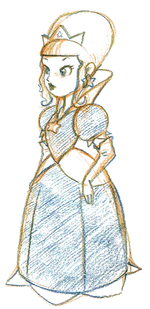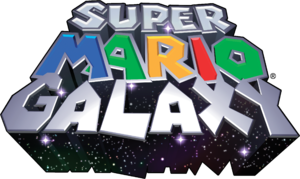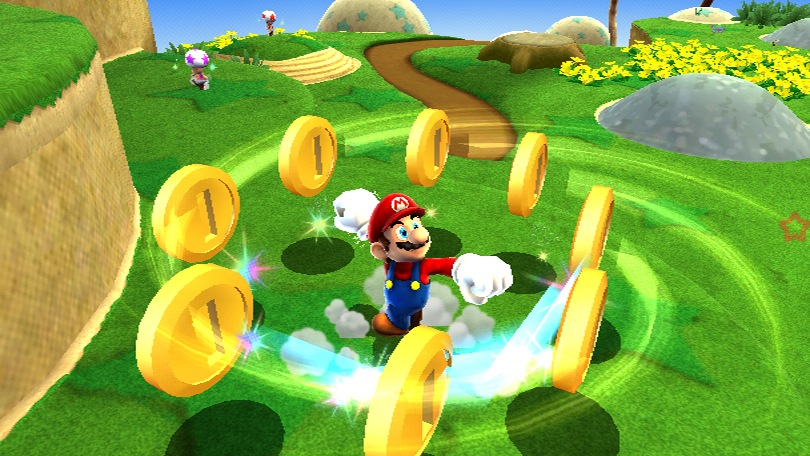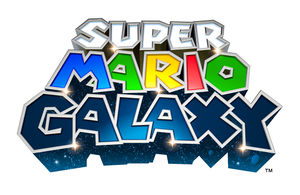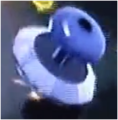User:Catonator/Prerelease:Super Mario Galaxy
This page details pre-release information and/or media for Super Mario Galaxy.
| To do: Videos and images, as well as rest of the conferences, concept art and development information/interviews |
The development of SMG was a rocky road, and as a result, the game changed a lot during development. Please note, that: 1. This is under heavy editing by me. Whenever you feel something big is missing, or you want to add some prerelease images, feel free to. 2. The large amount of video links here are for my personal reference and for temporary archival, I spent a while trying to hunt them down.
Media TODO:
- [1]
- [2]
- [3]
- [4]
- [5]
- Trailer
- E3 2006 Video 1
- E3 2006 Video 2
- E3 2006 Video 3
- E3 2006 Video 4
- Megaleg at E3 2006
- Tarantox at E3 2006
- E3 '06 King Kaliente
- E3 '06 King Kaliente clip 2
- The GDC '07 trailer
- E3 '07 Trailer
- E3 '07 Video 1
- E3 '07 Video 2
- E3 '07 Video 3
- E3 '07 Video 4
- E3 '07 Video 5
- E3 '07 Video 5
- E3 '07 Video 6
- E3 '07 Video 7
- E3 '07 Press conference video
- "Honeybee Kingdom" at GC 2007
Contents
Early concepts
According to Miyamoto himself, the original concept of Super Mario Galaxy begun from a tech demo for the Nintendo GameCube known as Super Mario 128.
The official Prima Guide Book contained a few pages of early concepts.
Rosalina's design was different. Also both Yoshi and Starship Mario were going to appear in SMG; both were pushed to the sequel.
E3 2006
Super Mario Galaxy was first shown at E3 2006, and very different no less. At this point the game was closer to a tech demo demonstrating the motion controls of the Wii.
General differences
- Health meter has eight wedges instead of three, and functioned more like the Super Mario 64 counterpart.
- Mario uses voices from Super Mario Sunshine and Super Mario 64, along with some brand new not heard in the final game.
- The galaxy seen at E3 was much larger than any of the galaxies seen in the final release, and had three boss battles.
- There were seven songs present: The title screen music, BGM_IN_BUBBLE, "Egg planet", "Tension" and the boss fight themes. None of the music was orchestrated.
- The Wiimote's internal speaker made a coin sound whenever a coin was collected.
- Mario was able to kick the star bits around, and the player had to press B and point at the star bit to collect it.
- The cursor could hold enemies on place by holding B, a power that was given for the second player in the final game.
- Instead of Lumas, there were Toads with stars on their caps and Star Bunnies, which would transform into said toads.
- The talking mechanics were different: whenever the was a toad with something to say, when the player gets close, the toad first waves at the player and has a speech bubble with an exclamation mark above their head. If the player gets even closer, the toad starts to talk. The player can exit this by pressing A or walking away.
- There was no limit to the number of spins the player could do.
- The spins were more powerful, they could suck coins towards them. This was partially implemented to the red star powerup in the final.
- The demo's galaxy lacks a name. Some fans have named it "Star World" due to the rather engrish text welcoming the player, "Welcome to the Star World!".
- The stars used the sounds from SMS when appearing and when collected, the music was a remix of the goal tune from Super Mario Bros..
- The star bits were know as "star shards", and their counter was in format of "0/100". It's not known if it was possible to collect 100, and what would happen if one collected them all.
- Names of some objects were different: both launch- and sling stars were known simply as "stars", pull stars were called "blue stars" and sling pods weren't officially named, though some people called them "wobble launchers".
- Goombas didn't spin after the player stunned them with spinning, nor did they drop any star bits when defeated this way.
- The number font was reused from Super Mario Sunshine.
- The player had six minutes to find and collect a star.
- Star bits had a different sound when collected.
HUD
The HUD was different:
- The Mario head graphic for the extra life counter was from Super Mario Sunshine, and the counter was positioned bottom-right.
- The cursor was yellow, had longer "tail" and flashed red whenever it was outside the screen.
- The coin counter was positioned in the top-left.
- The star bit counter was positioned bottom-left.
- The number font was reused from Super Mario Sunshine.
- There was a timer to notify players about how much time they had left. It would pop up every minute and make a "ding" sound.
- The "You got a star!" message was white, had a shadow and was written in all caps. the "Too Bad! message was also white.
- The effect for collecting a 1up was simpler, green text saying "1up!". The final version says "1-up".
Bosses
Megaleg
Megaleg's concept was born during the making of The Legend of Zelda: Ocarina of Time, where the final boss with Ganon would have involved him growing gigantic and Link climbing up to hit his head. However, the limited hardware of Nintendo 64 proved this to be impossible, at least at the time.
- Megaleg was called "Snifit Bot".
- The planet seen before him is made of grass and dirt. This early design can still be seen in the final game as the planet's low model.
- Landing on the grassy planet does not play "Tension".
- Bowser Jr. wasn't present in this early build.
- Megaleg has more shades of gray and brown.
- Megaleg held an ordinary power star instead of a grand star.
- There are no capsules containing coins and star bits on the ground.
- The capsule on his head has a light instead of a star, and the light changes colours according to the Megaleg's state: It's white when the player is on the ground, blue when the player climbs on him and red after the player has hit him once.
- Once the player has hit him, Megaleg brings up 4 unbreakable walls instead of 8 breakable.
- Its head has orange smoke come out of it as he explodes.
Tarantox
- Hitting any of the green points is enough to flip him over, in the final, the player has to hit the biggest one on his bottom.
- The red points pulsated more and made a higher-pitched sound.
- The green points wouldn't regenerate for the second phase.
King Kaliente
King Kaliente stayed more or less the same to the final version.
- King Kaliente had less health, and started the "tennis" on the first hit. The first hit was able to knock his crown off, and the second hit killed him.
GDC 2007
No playable demo was shown here, instead Nintendo showed a new trailer with early Melty Molten Galaxy, Gusty Garden Galaxy and Good Egg Galaxy. This was the first time the galaxies resembled their final forms, although the game was still far from finished.
Differences
- Topman tribe was in Melty Molten Galaxy. In the final game, they were moved to Dreadnought Galaxy.
- Topmaniac was very different: It was purple, small and had a spring in his head instead of the button to make his sawblade go in. Interestingly, some elements still remain in the game.
- Gusty Garden Galaxy used the Good Egg Galaxy space background.
E3 2007
Only a trailer was shown to public, however, a few gaming networks (such as IGN) got to play behind closed doors. It seems that a lot of the game was finished at that point and was just left out of some finishing touches.
- The star bit counter was in format of "000", even if all the digits were zeroes.
- The bee suit's fly meter had a different design, lacking the center point.
- Space Junk Galaxy was known as "Star Dust Galaxy".
- Star pieces were still known as star shards. (source)
GC 2007
- Honeyhive Galaxy was known as "Honeybee Kingdom".
- Space Junk Galaxy was known as "Star Dust Galaxy".
- Some of the Dialogue is different.
Other builds
- In an offscreen footage, the "Sweet Sweet Galaxy" was known as "Cookie Factory Galaxy", and the mission "Conquering the Sweet Cake" was called "Rocky Road".
- The official guide for the game mentions "breakable horns" during the Bonefin battle. It appears that they were cut late, since they are still in the game.
- Rosalina was originally "Rosetta". The name is a direct translation of her Japanese name, and comes from a type of orbit.
- The red pokey in Dusty Dune Galaxy was originally green.
- According to this screenshot here by IGN, Bowser was originally fought on a magma planet instead of the glassy one in the final. Mario cannot get this far on the platform either, as the cutscene starts as the player reaches the top of the stairs. Bowser never breathes fire either.
